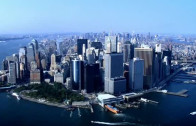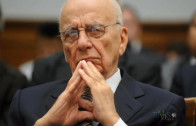The Ascent of Money
For millions of people, the global economic collapse has generated curiosity about how money systems actually work, as opposed to how they’re portrayed, especially when so many financial pundits seem to be baffled. In The Ascent of Money, economist Niall Ferguson works through some history that created today’s money system, visiting the locations where key events took place and poring over actual ledgers and documents, such as the first publicly traded share of a company. Viewed with a critical eye, this series aims to show how the history of money is indeed at the core of civilisation, with economic strength determining political dominance, wars fought to create wealth and individual financial barons determining the fates of millions.
Series
From Shylock’s pound of flesh, to the loan-sharks of Glasgow; from the “promises to pay” on Babylonian clay tablets, to the Medici banking system; this first episode explains the origins of credit and debt and why credit networks are indispensable to any system of power.
How did finance become the realm of the ruling class? Through the rise of the bond market in Renaissance Italy. With the advent of bonds, war finance was transformed and spread to north-west Europe and across the Atlantic. It was the bond market that made the Rothschilds family the richest and most powerful family of the 19th century.
Why do stock markets produce bubbles and busts? In this episode, we go back to the origins of the joint stock company in Amsterdam and Paris. This draws telling parallels between the current stock market crash and the 18th century Mississippi Bubble of Scottish financier John Law and the 2001 Enron bankruptcy. We see why members of this culture have a herd instinct when it comes to investment, and why no one can accurately predict when the bulls might stampede.
Life is purportedly a risky business—which is why people supposedly take out insurance. But faced with an unexpected disaster, the state ‘steps in.’ This episode travels to post-Katrina New Orleans to ask why the free market can’t provide some of the adequate protection against catastrophe. The quest for an answer takes us to the origins of modern insurance in the early 19th century and to the birth of the welfare state in post-war Japan.
It was the greatest economic crime in the history of money that sounded so simple: Give state-owned assets to private interests. After all, what better foundation for a “property-owning democracy” than a campaign of privatisation encompassing housing? Capitalist theory says that markets can’t function without mortgages, because it’s only by borrowing against their assets that entrepreneurs can get their businesses off the ground. But what if mortgages are bundled together and sold off to the highest bidder?
The final part of the series investigates the globalisation of the Western economy and the uncertain balance between the important component countries of China and the United States. In examining the last time globalisation took hold—before World War One—we find a notable reversal; namely that today, money is pouring into the English-speaking economies from the developing world, rather than out.




